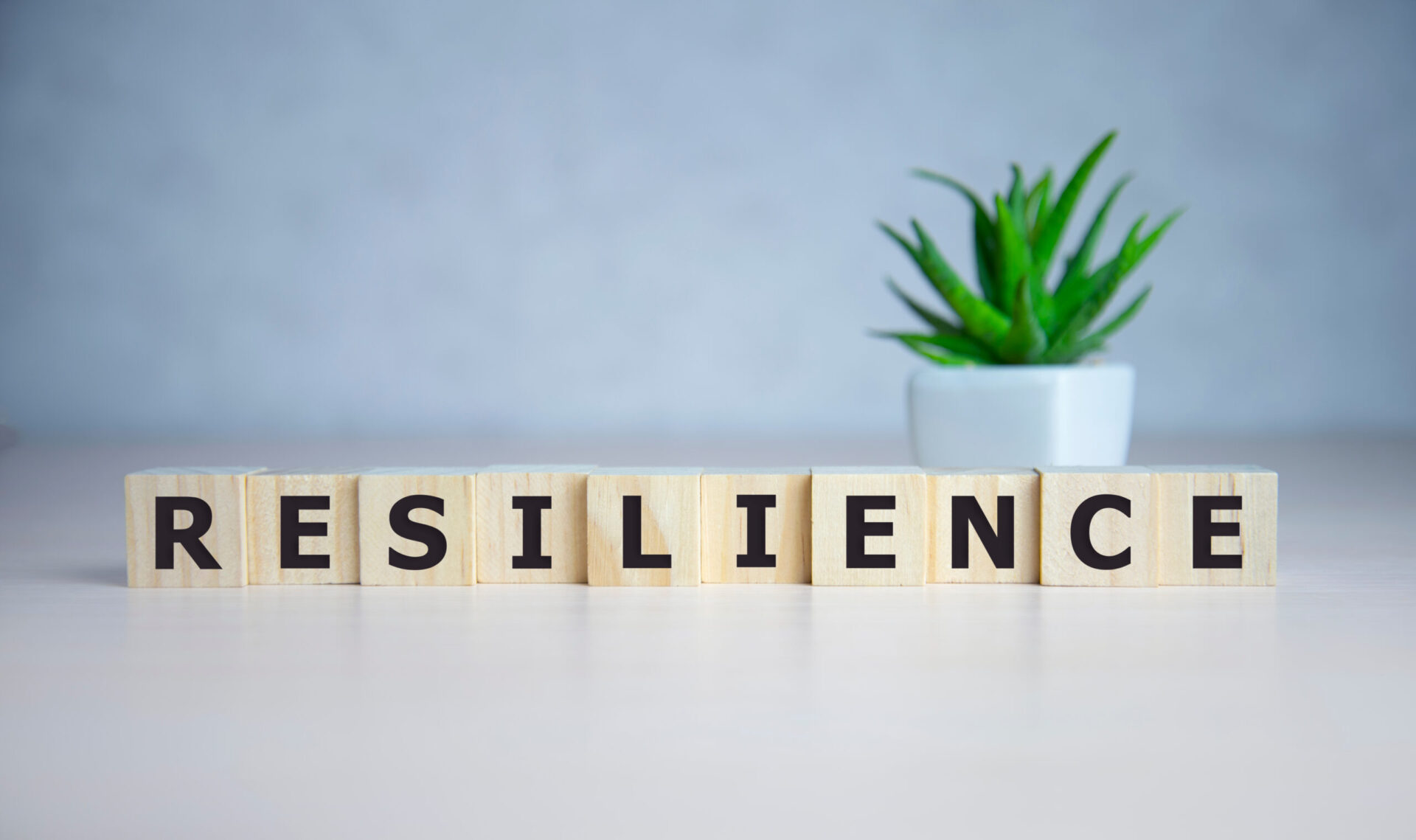2020 was unprecedented and throughout the year we heard from leaders sharing their recollections on leadership resilience as the year unfolded.

One of the most memorable leadership resilience insights shared came from one leader, an older gent, with decades of experience in start-ups, comfortable in working with diverse teams, who described himself as accepting of the inevitability of change and flexible in approach. Yet, as he reflected on the impact of the pandemic on his own resilience and that of his organisation, he became noticeably emotional as he described his experience.
“How we did business had to change, it was the only way to stay viable and relevant, that was one of the things that kept me up at night, how do we stay relevant? I know it took its toll on me and on my staff. We were challenged in ways we had not experienced before and over time we became less resilient, some of our good practices began to slip and that took its toll too. As a leader and working in start-ups, I face challenges all the time, but this was different. Everyone was affected, staff, clients, the Board and I had to find a way up and out for us”.
As I listened, I could vividly imagine the idea of ‘finding the way up and out’. It reminded me of an escape. Many leaders we have worked with this year have talked about ‘a breather’, ‘coming up for air’, ‘seeing the light (hope)’, ‘getting headspace’, ‘rising’, ‘building up’. In essence leading the organisation up and out of the current challenge. Over 100 years ago Kipling eloquently stated, “If you can keep your head while those around you are losing theirs”. This has been the challenge for many leaders, to keep their head, foster leadership resilience and help those around them find focus and calm and direction long enough to stabilise the business and rise it up and drive it forward. Here are four leadership resilience lessons shared by leaders that will help you lead your organisation through 2021
If you can keep your head when all about you are losing theirs and blaming it on you, If you can trust yourself when all men doubt you, but make allowance for their doubting too;
If by Rudyard Kipling
Leadership Resilience Lesson 1
Projecting calm in a crisis helps create perspective and creative problem-solving across the organisation

“Facing a massive unfamiliar challenge left me feeling overwhelmed at first. I couldn’t let my staff know that I didn’t have the answers, even though, nobody had the answers. One thing I knew for certain, my panic would cause panic, so I better not let them see me panic”. This was one leader’s description of their commitment to staying calm. She recognised that the uncertainty of the situation resulted in a range of powerful emotional (and cognitive) responses from mild anxiety to sheer panic. The impact of the pandemic lead to stress about job uncertainty, financial strain, and dramatic work practice change. Wellbeing concerns became strategic priorities, she was required to make confident, hopeful decisions based on limited information. While this is not the ideal climate for decision making, her ability to maintain a considered perspective, manage her emotions and support those in management and leadership roles across the organisation to do the same helped to offer perspective created calm and the conditions for creative problem-solving, which strengthen resilience
Leadership Resilience Lesson 2
Creating a climate of trust for staff and clients gains buy-in and support for (untested) strategic decisions
“It is easier to lead an organisation through change if you are trusted. The reality is that not everyone trusts their leaders and not all organisations have a culture of high trust. In leading an organisation through the effects of the pandemic, you have work to hard to gain and sustain the trust of your team, staff and stakeholders”. The main lesson shared by this leader focused on communication and how this year quality and quantity counted. Specifically, clear, honest, fit-for-purpose communication can help to build trust among staff and clients, even where trust may be low. In an absence of communication, stories form which can help or hinder depending on their accuracy and appropriateness. To minimise the impact of hindering stories, he highlighted the importance of regular, clear and shared communication. He also pointed out that honest communication is more valuable to staff and clients that hopeful half-truths. Key messages communicated to teams about relevant work practices and whole organisation messages where relevant, served to keep staff and clients informed. Opening channels of communication to share learning and information also created new networks to support strategic organisational decisions and increase the quality of communication across the organisation. These approaches to communication made it easier for this leader to communicate changes in direction, which previously would have been met with high levels of resistance, but now caused less strain on levels of organisational resilience.
Leadership Resilience Lesson 3
Cultivating an ethos of teamwork builds relationships and drives performance

Leaders have shared numerous examples with us of how teamwork has flourished over the pandemic. Many reported a rocky start as teams and managers adjusted to the new ways of working together however, teamwork is one of the areas commonly cited as a success and an approach to be taken into 2021. More than one leader described how, at the start of the pandemic teams were set up in regimental style. Managers issued orders that were sent down the ladder. Online meetings often lacked dialogue but were filled with monologues from the power sources on the call. Agendas were regularly disregarded as meetings about meetings were scheduled, leaving little time for actual work to get done. In terms of resilience, the impact of this approach causes stress and anxiety and can quickly erode resilience. One leader noticed this and fortunately, the combination of passing time and attention on team performance gave her the idea to create space and time for teams to evaluate their practices and come up with ways to enhance their team’s effectiveness. Along with the staples, redefining team goals as the focus of the business changes, evolving work practices so they are fit-for-purpose and spending a little more time off the screen teams offered ideas that played to their strengths. In terms of resilience, it was noted that as the sense of agency over their work increased, so too did quality of communication, commitment and accountability.
Leadership Resilience Lesson 4
Modelling genuine care towards others builds effective networks and interpersonal resilience
The leaders agreed that in times of change and challenge, people look up the chain of command for guidance. One leader realised what his staff were seeing when they looked up: a mentally exhausted, cranky, negative, sleep deprived man, with poor nutrition, a very poor work-life balance, and extremely low levels of energy. Admittedly, although he was often criticised for getting the balance wrong, he did not want to emulate this approach across the organisation. He mentioned that when he genuinely inquired about a member of staff, he felt it was being met with disbelief. The look and the feel were mismatched, and his concern was met with cynicism rather than as intended. As he considered his experience, he contemplated how he had seen others, from the management team and across the organisation acting and appearing like him. Understanding that this was not sustainable for himself, he began to instigate work practices that spoke louder than his words. Small but significant changes including dedicated meeting free afternoons, flexibility in start times, meeting free lunch breaks and updates on staff wellness from a range of function heads. This latter initiative was to promote the idea that care, and wellness were the responsibility of all in the organisation and not just the leaders’ role.
As we begin 2021 after a challenging year, where organisation’s resilience, adaptability and responsiveness to change were challenged in unprecedented ways, leaders should carve out time to pause and reflect. Successes, failures or happy accidents create the fabric of our workplaces as we wrap up and box away 2020.
What have you learned about leadership resilience? What have you learned; about you, your management team, your staff, your clients, your organisation? What will you leave behind in 2020? What will you bring with you into 2021 because it will enhance resilience? How can keep resilience alive at a strategic level?
There’s no secret sauce here and 2021 is shaping up to be just as challenging as last year, but taking time now to reflect will help you to cement your leadership resilience. Do it.





